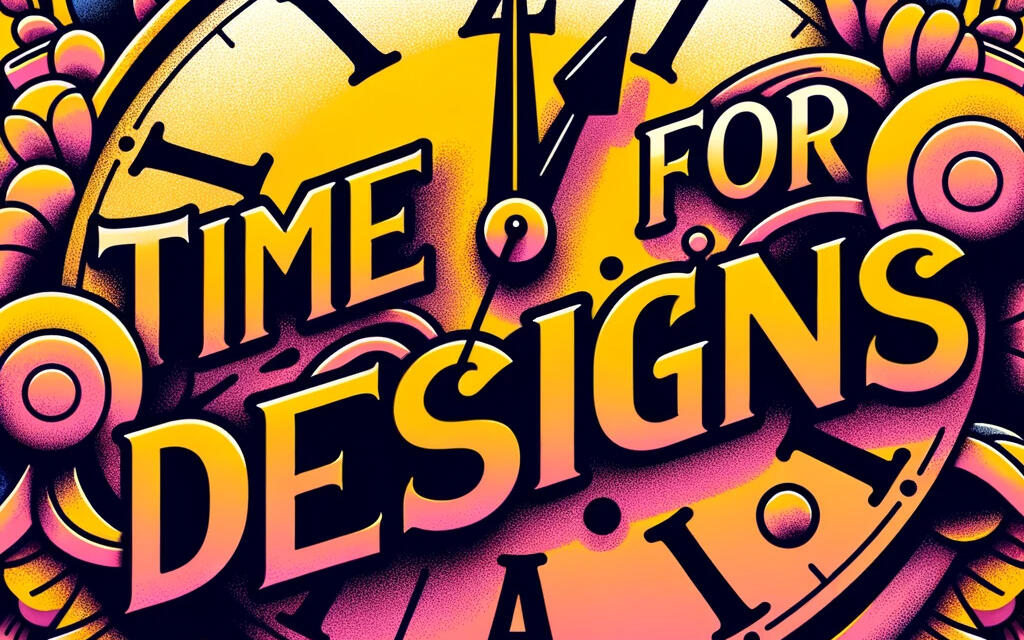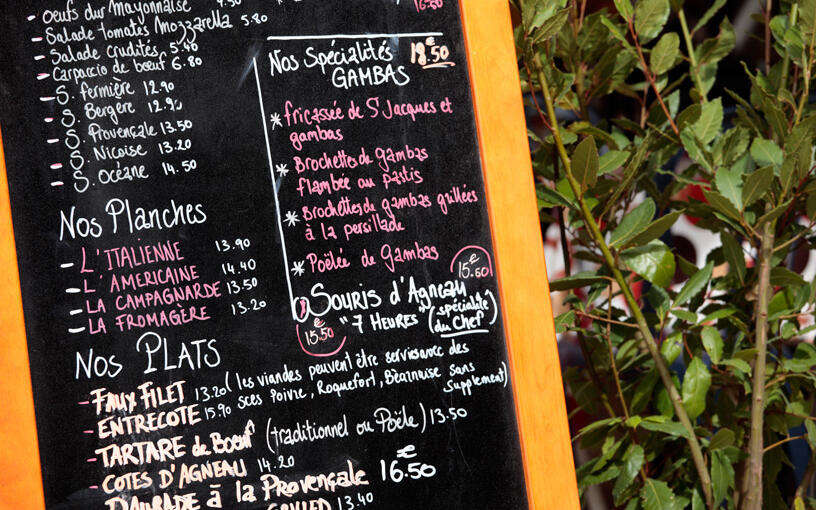Introduction: The Ubiquity and Importance of Signs
In the tapestry of daily life, signs serve as silent communicators, guiding, warning, informing, and even entertaining us. From the moment we wake up to the time we retire for the night, we're subconsciously navigating a world punctuated by signs. Whether it's the simple "Exit" sign that ensures our safety in buildings, the vibrant billboards that capture our attention on highways, or the modest house number signs that mark our homes, these visual cues play a pivotal role in shaping our actions and decisions.
The significance of signs transcends their physical presence. They are the guardians of safety on roads, ensuring smooth traffic flow and reducing the risk of accidents. In workplaces, signs become the silent watchdogs, alerting workers to potential hazards and ensuring their well-being. In commercial settings, signs become brand ambassadors, conveying business ethos, and attracting potential customers.
What's fascinating is the sheer diversity of signs that we encounter. They're not just mere markers; each type of sign has a specific purpose and message. Road signs, for instance, maintain order on busy streets. No smoking signs, on the other hand, promote public health and ensure compliance with local regulations. Custom signs allow individuals and businesses to convey personalized messages, adding a touch of uniqueness to the environment.
This diversity underscores the adaptability and versatility of signs. They morph in design, size, and message to fit the context they're placed in, making them one of the most dynamic tools of communication. As we delve deeper into the world of signs in this guide, we'll explore their varied type
No Smoking Sign In Ireland: Promoting Health and Safety
In recent years, Ireland has taken significant strides to combat the adverse effects of smoking and passive smoke exposure. One of the most visually prevalent measures is the widespread use of "No Smoking" signs. These aren't just mere indicators; they represent a broader movement towards a healthier Ireland.
The Imperative of No Smoking Signs in Public Places: The introduction of "No Smoking" signs, particularly in public places, serves multiple purposes. Firstly, they act as constant reminders of the health risks associated with smoking. These signs, often accompanied by health warnings, underline the dangers of tobacco consumption, not just for smokers but for those around them. Passive smoke exposure, after all, can be as detrimental as direct inhalation.
Moreover, these signs foster an environment of public safety. They demarcate smoke-free zones, ensuring that public spaces such as parks, restaurants, and transportation hubs remain free from the hazardous effects of smoke. This not only guarantees cleaner air but also ensures a comfortable environment for children, the elderly, and those with respiratory conditions.
Legal Implications and Business Benefits under Irish Law: Ireland's pioneering stance against smoking in public places came to the fore in 2004 with the introduction of a ground-breaking piece of legislation. The law made it mandatory for enclosed workplaces, including bars and restaurants, to be smoke-free. This was a monumental step, making Ireland the first country in the world to institute such a nationwide ban.
For businesses, adhering to this law by displaying "No Smoking" signs and ensuring compliance has multiple benefits. Firstly, it eliminates the risk of legal repercussions, which can include hefty fines. More importantly, it sends a message to customers and employees alike that the establishment prioritizes their health and well-being.
From a broader perspective, businesses that enforce smoke-free environments contribute to a larger societal goal. They aid in reducing healthcare costs linked to smoking-related ailments and play a role in decreasing the overall smoking rates in the country.
In conclusion, while the "No Smoking" signs in Ireland may seem simple and straightforward, they are emblematic of a profound shift towards a healthier society. They represent a nation's commitment to safeguarding its citizens' health and a collective step towards a smoke-free future.
This diversity underscores the adaptability and versatility of signs. They morph in design, size, and message to fit the context they're placed in, making them one of the most dynamic tools of communication. As we delve deeper into the world of signs in this guide, we'll explore their varied types, their importance, and the impact they have on our daily lives.
Road Signs: Navigating the Highways and Byways of Ireland
Road signs, often taken for granted, are the silent custodians of our roads. Acting as vital tools for communication, these markers guide millions of drivers daily, ensuring safe and efficient travel.
The Role of Road Signs for Safety and Direction:
At the heart of road safety in Ireland, and indeed globally, lies an intricate system of traffic signs. These signs are strategically placed to offer direction, enforce regulations, and caution against potential dangers. They play a pivotal role in preventing accidents by informing drivers about the road ahead, ensuring that traffic rules are adhered to, and guiding drivers during challenging conditions.
A Glimpse into the Common Types of Road Signs in Ireland:
The Emerald Isle, with its unique landscape and driving conditions, employs a myriad of road signs to facilitate smooth vehicular movement. Let's delve into some of the most prevalent categories:
- Traffic Signs: These are perhaps the most ubiquitous, aiding in the general flow of traffic. Examples include the simple "Stop" sign, the "Yield" sign, or signs indicating roundabouts.
- Direction Signs: Essential for anyone unfamiliar with Ireland's roads, these signs point towards cities, towns, or other significant landmarks. They're often seen on major highways and at crossroads, ensuring drivers find their way. In Ireland, they're usually rectangular, with white or yellow backgrounds and black or dark green lettering.
- Regulatory Signs: These signs enforce the law. Ignoring them can lead to penalties. They include speed limit signs, no overtaking zones, and parking regulations. In Ireland, regulatory signs are typically circular. For instance, the national speed limit sign features a white circle with a black diagonal line.
- Warning Signs: Serving as the vigilant eyes on the road, these signs alert drivers to potential hazards ahead, be it a sharp turn, a school crossing, or animals on the road. Recognizable by their triangular shape with a red border, they're crucial for pre-emptive action on the road.
While road signs in Ireland are largely standardized and in line with international norms, it's essential for both residents and visitors to familiarize themselves with them. Understanding the meaning behind each sign not only ensures compliance with the law but significantly enhances safety for all road users.
No Smoking Sign In Ireland: Promoting Health and Safety
In recent years, Ireland has taken significant strides to combat the adverse effects of smoking and passive smoke exposure. One of the most visually prevalent measures is the widespread use of "No Smoking" signs. These aren't just mere indicators; they represent a broader movement towards a healthier Ireland.
The Imperative of No Smoking Signs in Public Places:
The introduction of "No Smoking" signs, particularly in public places, serves multiple purposes. Firstly, they act as constant reminders of the health risks associated with smoking. These signs, often accompanied by health warnings, underline the dangers of tobacco consumption, not just for smokers but for those around them. Passive smoke exposure, after all, can be as detrimental as direct inhalation.
Moreover, these signs foster an environment of public safety. They demarcate smoke-free zones, ensuring that public spaces such as parks, restaurants, and transportation hubs remain free from the hazardous effects of smoke. This not only guarantees cleaner air but also ensures a comfortable environment for children, the elderly, and those with respiratory conditions.
Legal Implications and Business Benefits under Irish Law:
Ireland's pioneering stance against smoking in public places came to the fore in 2004 with the introduction of a ground-breaking piece of legislation. The law made it mandatory for enclosed workplaces, including bars and restaurants, to be smoke-free. This was a monumental step, making Ireland the first country in the world to institute such a nationwide ban.
For businesses, adhering to this law by displaying "No Smoking" signs and ensuring compliance has multiple benefits. Firstly, it eliminates the risk of legal repercussions, which can include hefty fines. More importantly, it sends a message to customers and employees alike that the establishment prioritizes their health and well-being.
From a broader perspective, businesses that enforce smoke-free environments contribute to a larger societal goal. They aid in reducing healthcare costs linked to smoking-related ailments and play a role in decreasing the overall smoking rates in the country.
In conclusion, while the "No Smoking" signs in Ireland may seem simple and straightforward, they are emblematic of a profound shift towards a healthier society. They represent a nation's commitment to safeguarding its citizens' health and a collective step towards a smoke-free future.
House Number Signs: More Than Just an Address
House number signs, often overlooked in their ubiquity, are indeed much more than mere markers of an address. They are a fusion of functionality and style, serving as both essential locators and decorative elements that enhance a home's facade.
The Dual Role of House Number Signs:
Functionality Meets Aesthetics: At its core, a house number sign's primary function is clear: to identify a residence. It aids postal workers, emergency services, visitors, and even delivery personnel in locating a particular dwelling among a sea of buildings. This practicality ensures seamless operations in our daily lives, from receiving mail to welcoming friends.
However, beyond this functional role lies an aesthetic dimension often understated. Address plaques, especially those tailored to the homeowner's taste, can significantly elevate a home's curb appeal. They become an extension of the home's design language, offering a glimpse into the personalities and preferences of those who reside within. Whether it's a sleek modern design, a rustic wooden plaque, or a vintage metal sign, these markers can complement a home's architecture and even its landscaping.
Creative Ideas for Custom House Number Signs:
For homeowners looking to infuse a touch of uniqueness to their residence, custom house number signs present a world of possibilities. Here are some innovative ideas:
- Material Magic: Experiment with diverse materials like slate, ceramic, brass, or even glass. Each material brings a different vibe—while brass might exude a classic elegance, slate can lend a rustic charm.
- Artsy Fonts: Ditch the standard fonts and opt for something that reflects your style. Whether it's a cursive elegance or bold block letters, the right font can make a statement.
- Illuminated Plaques: For those who want their homes to stand out even in the dark, illuminated address signs can be both stylish and functional. LED backlighting or solar-powered signs can add a modern touch.
- Decorative Elements: Incorporate elements like floral motifs, geometric patterns, or even thematic icons that resonate with the home's overall design. A seaside residence, for instance, could feature a plaque with wave motifs.
- 3D Designs: Instead of flat plaques, consider raised numbers or letters, offering a tactile and visual depth to the sign.
In essence, house number signs, while rooted in practicality, offer an expansive canvas for creativity. They are small yet impactful elements that bridge the world outside with the intimate stories and styles of those inside.
Exit Signs: Guiding the Way Out
Exit signs, while often inconspicuous in their placement, play a pivotal role in the safety and security of building occupants. These signs, with their unmistakable design and illumination, act as silent sentinels, always at the ready to guide us to safety in times of need.
The Indispensable Role of Exit Signs in Buildings: At a glance, exit signs may seem like mere markers pointing to a building's exits. However, their importance is magnified manifold during emergencies. When smoke fills a hallway or when the power goes out, these illuminated signs become the guiding lights, leading occupants safely out of the building.
Safety exits, as indicated by these signs, are strategically placed to provide the quickest egress from a building. In situations like fires, where every second counts, a clear and visible exit sign can make the difference between safety and catastrophe. Moreover, in large commercial buildings, malls, or theatres where visitors might not be familiar with the layout, exit signs ensure that everyone, regardless of their familiarity with the structure, has a clear path to safety.
Regulations and Standards for Exit Signs:
Given their critical role, exit signs are governed by stringent regulations and standards. These rules ensure that the signs are effective, reliable, and consistent in their design and functionality.
- Illumination: Most building codes mandate that exit signs be illuminated 24/7. This can be achieved through internal illumination (where the sign itself emits light) or external means (where a light source shines on the sign). Modern buildings often employ LED-lit exit signs due to their longevity and energy efficiency.
- Visibility: Regulations typically require exit signs to be visible from any location within the exit access, ensuring that occupants can quickly identify the escape route regardless of their position.
- Placement: Exit signs must be placed at specific heights and intervals, especially in corridors, ensuring they're neither too high nor too low. This placement guarantees maximum visibility, even in crowded scenarios.
- Durability and Power Source: Given their emergency role, exit signs often come equipped with backup power sources. In the event of a power outage, these signs will remain illuminated, thanks to battery backups or alternative energy sources.
- Regular Inspections: To ensure their continuous functionality, exit signs are subject to regular inspections. These checks ensure that the illumination works, the signs are clear of obstructions, and backup power systems function correctly.
In conclusion, exit signs, while modest in appearance, are monumental in their role. They embody the essence of safety design in buildings, always alert and always guiding. As we navigate the spaces we frequent, it's comforting to know that these silent guides stand ready to lead us to safety.
Safety Signs: Ensuring Workplace and Public Safety in Ireland
Safety signs, with their distinct designs and clear messaging, are vital tools that aid in maintaining safety standards, both in workplaces and public spaces. In Ireland, with its unique blend of historical landmarks, bustling urban centres, and expansive industrial zones, these signs play a pivotal role in ensuring the safety and well-being of its inhabitants.
Different Types of Safety Signs and Their Significance:
Safety signs in Ireland, much like the rest of the world, can be broadly categorised based on their purpose and the kind of information they convey:
- Hazard Signs: Recognisable by their yellow or amber backgrounds with black symbols, these signs warn about potential dangers. Examples include signs indicating the presence of chemicals, high voltage areas, or machinery in operation.
- Warning Labels: Often found on products or equipment, these labels provide vital information about potential risks associated with the item's use. They might caution against improper handling, exposure to certain elements, or specific hazards tied to misuse.
- Precautionary Signs: These signs provide guidance on preventive measures to mitigate risks. They may instruct on the need for personal protective equipment, such as hard hats or safety goggles, or advise on safe handling procedures.
- Workplace Safety Signs: These are specific to workplaces, ensuring employees are aware of potential hazards in their environment. They encompass a range of signs, from fire exit markers to signs indicating wet floors.
The significance of these signs cannot be overstated. They act as constant reminders, ensuring that safety protocols are followed, risks are understood, and preventive measures are taken.
Best Practices for Placing Safety Signs and Irish Regulations:
In Ireland, the placement and usage of safety signs are governed by specific standards and regulations. Here are some best practices and guidelines:
- Visibility and Clarity: Safety signs should be placed where they are easily visible, ensuring that they can be seen by everyone, even in crowded or busy areas. The messaging should be clear, with easily recognisable symbols and legible text.
- Regular Maintenance: Signs should be regularly checked for wear and tear, ensuring they remain clear and legible. Faded or damaged signs should be promptly replaced.
- Use of Irish Language: In certain areas, especially in Gaeltacht regions, safety signs might also feature the Irish language, reflecting the country's bilingual nature.
- Compliance with Standards: In Ireland, the Health and Safety Authority (HSA) provides guidelines on the use and placement of safety signs. Businesses and public spaces should ensure they are in compliance with these standards, which are in line with European norms.
- Engaging Training: Beyond just placing signs, businesses should engage in regular training sessions, ensuring employees understand the significance of each sign and the associated safety protocols.
In conclusion, safety signs, while simple in design, carry the weighty responsibility of safeguarding lives and well-being. In Ireland, with its unique blend of tradition and modernity, these signs ensure that safety remains a priority, whether in historical sites, modern businesses, or bustling public spaces.
No Parking Sign: Regulating Vehicle Placement
In the bustling streets and narrow lanes, amidst the dance of pedestrians and vehicles, stands the often-underestimated "No Parking" sign. While it might seem like a mere directive, its role in urban planning and traffic management is paramount.
Why No Parking Signs are Essential for Traffic Flow and Safety: The importance of "No Parking" signs extends far beyond just keeping a spot clear. These signs are critical for multiple reasons:
- Ensuring Smooth Traffic Flow: Streets and roads are designed with specific traffic capacities in mind. When vehicles park in zones not meant for parking, they can obstruct the flow, leading to congestion. "No Parking" signs ensure that traffic lanes remain unblocked and vehicles can move without hindrance.
- Safety Considerations: Often, these signs are placed near intersections, crosswalks, or areas with reduced visibility. By preventing parking in these zones, the signs ensure that drivers have clear sightlines, reducing the risk of accidents.
- Access for Emergency Vehicles: Certain zones are kept clear to ensure that emergency vehicles, like fire trucks or ambulances, have unobstructed access. Time is of the essence in emergencies, and a wrongly parked car can lead to critical delays.
- Protecting Public Amenities: Some "No Parking" signs are placed to protect public utilities or amenities, ensuring that they remain accessible and undamaged.
Varieties of No Parking Signs and Their Specific Uses: The "No Parking" directive is not one-size-fits-all. There are variations tailored to specific situations:
- Time-Limited No Parking: These signs allow parking but only for a specified duration. For instance, they might indicate "No Parking from 8 am - 6 pm", allowing for night-time parking.
- Zone-Specific No Parking: Found especially in urban areas, these signs demarcate zones where parking is perpetually prohibited. They might be near schools, hospitals, or other critical infrastructure.
- Conditional No Parking: These signs come with specific conditions, such as "No Parking during snow events" or "No Parking on market days".
- Street Cleaning No Parking: Certain days might be designated for street cleaning, and parking on these days would obstruct the cleaning vehicles. Signs indicating such restrictions are usually temporary but essential for urban maintenance.
In the intricate ballet of urban traffic, "No Parking" signs play the role of a conductor, ensuring harmony and order. They are a testament to the meticulous planning that goes into urban management, ensuring safety, efficiency, and the smooth flow of daily life.
Custom Signs: Personalizing Your Message
In a world saturated with standard signs and generic messages, the allure of custom signs has never been stronger. These bespoke markers offer a unique blend of personalization and professionalism, allowing businesses, event organizers, and individuals to convey their messages with a distinct flair.
The Rising Trend of Custom Signs for Businesses and Events: Custom signs have emerged as a powerful tool in the branding and event management arsenal for several reasons:
- Unique Brand Identity: For businesses, custom signs provide an opportunity to break away from the generic and establish a unique brand identity. Whether it's a cafe with a whimsical sign or a law firm with an elegant, personalized plaque, custom signage sets a brand apart in a crowded market.
- Event Personalization: Events, whether weddings, corporate gatherings, or community fests, are personal affairs. Custom signs, from welcome banners to directional signs, infuse these events with a personal touch, reflecting the theme, ethos, or the personalities behind them.
- Versatility: Custom signs are not bound by standard sizes, shapes, or materials. This versatility allows for creative expressions tailored to specific needs, be it a neon sign for a nightclub or a rustic wooden sign for a farmhouse.
Tips for Designing Impactful Custom Signs:
- Understand Your Audience: Before diving into design, understand who the sign is for. A youthful, modern audience might appreciate bold colours and modern fonts, while a more mature or professional audience might lean towards understated elegance.
- Quality Matters: A custom sign reflects your brand or event. Prioritize quality in materials and craftsmanship. Whether it's a metal brand sign or a fabric event banner, ensure durability and finish.
- Colour Coordination: Colours evoke emotions and set the mood. Choose a palette that aligns with your message. Remember, contrast is key for readability.
- Typography: Fonts can make or break a sign. Opt for legible fonts, and avoid overcrowding the sign with too much text.
- Incorporate Graphics: A picture speaks a thousand words. Consider incorporating relevant graphics, logos, or icons that resonate with your message.
- Placement: Even the most beautifully designed sign will lose its impact if not placed correctly. Ensure the sign is visible, at eye level, and not obscured by any obstructions.
- Stay Updated: Trends in design evolve. While you want your sign to be timeless, it's also essential to ensure it doesn't feel outdated. Regularly updating or tweaking your custom signs can keep them fresh and relevant.
In conclusion, custom signs are more than just markers; they are expressions of identity, intent, and creativity. In the vast sea of generic messages, a custom sign stands as a beacon, drawing attention and leaving a lasting impression.
Outdoor Signs: Making a Statement in the Open
In the vast expanse of the outdoors, amidst the natural landscapes and urban architecture, outdoor signs stand tall and bold, conveying messages to a vast and diverse audience. From colossal billboards on highways to elegant storefront signs in bustling marketplaces, these signs are powerful tools in the world of branding and advertising.
The Power of Outdoor Signs in Branding and Advertising: The strength of outdoor signs lies in their sheer visibility and reach. Here's why they hold immense power:
- Broad Audience Reach: Outdoor signs, especially those placed in strategic locations, have the potential to reach thousands, if not millions, daily. Whether it's commuters on a busy road, shoppers in a marketplace, or attendees at a large event, these signs capture attention effortlessly.
- Brand Reinforcement: Consistent branding across outdoor signs reinforces brand identity. A logo or brand message displayed across various outdoor mediums solidifies its presence in the audience's mind, leading to better recall and recognition.
- Cost-Effective: When compared to other advertising mediums like TV or digital ads, outdoor signs offer a more cost-effective solution with a lasting presence. A well-placed billboard, for instance, can generate impressions round the clock without recurring costs.
- Versatility: The world of outdoor signs is diverse. From promotional banners for seasonal sales to event signs announcing a local festival, these signs cater to varied needs and can be customized in design, size, and message.
Effective Strategies for Maximizing Outdoor Sign Visibility:
- Strategic Placement: Position is everything. Place signs where they are most likely to be seen by your target audience. High traffic areas, busy intersections, and popular marketplaces are prime spots.
- Clarity and Simplicity: Given the fleeting attention span of passers-by, outdoor signs should convey the message quickly and clearly. Avoid clutter; instead, focus on a clear message with bold visuals.
- Contrasting Colours: Use colours that stand out against the surroundings. Contrasting colour palettes not only make the sign pop but also enhance readability.
- Illumination: For signs meant to be visible during night-time, consider using illumination. Backlit signs or those with strategic lighting ensure 24/7 visibility.
- Regular Maintenance: An outdoor sign battles the elements – rain, sun, wind, and more. Regular maintenance ensures the sign remains pristine and the message clear. A faded or damaged sign can negatively impact brand perception.
- Interactive Elements: Modern outdoor signs can incorporate interactive elements, like QR codes, that link to digital platforms, offering a multi-dimensional advertising experience.
- Stay Updated: While outdoor signs have longevity, it's essential to update them to keep the message fresh and relevant. Seasonal promotions or new product launches can be highlighted to keep the audience engaged.
In essence, outdoor signs are the silent ambassadors of a brand or message in the vast outdoors. With the right strategy and design, they can make a powerful statement, leaving an indelible mark on the audience's mind.
Construction Site Signs: Safety in the Build Zone
Amid the symphony of hammers, drills, and cranes in the construction zone, one element stands silent yet supremely significant – the construction site signs. These markers, with their bold designs and clear directives, serve as the first line of defines against potential hazards, ensuring that every individual, whether a worker or a passer-by, remains safe amidst the whirlwind of activities.
The Crucial Role of Signs in Construction Site Safety: Construction sites are bustling hubs of activity, with multiple tasks being carried out simultaneously. Amid this organized chaos, the role of safety signs is multi-fold:
- Hazard Warnings: These signs alert workers and visitors to potential dangers. Whether it's deep excavations, overhead loads, or live electrical wires, hazard warning signs provide a clear indication of the risks present.
- Directive Signs: Beyond just warnings, these signs provide directives for safe practices. "Hard Hat Zone", for instance, clearly instructs that protective headgear must be worn in the area.
- Access Restrictions: Not every part of a construction site is accessible to all. Signs indicating "Authorized Personnel Only" or "No Entry" demarcate areas that are off-limits, ensuring that only trained individuals access high-risk zones.
- Emergency Information: In case of emergencies, signs pointing to first aid stations, emergency exits, or assembly points can be lifesavers, providing clear directions for evacuation or medical assistance.
- Equipment Usage: Certain machinery or equipment might have specific operating instructions or safety guidelines. Signs placed near them provide a quick reference, ensuring safe and correct usage.
Regulations and Best Practices for Construction Site Signs:
- Visibility and Clarity: Given the dynamic environment of construction sites, signs should be prominently placed, ensuring they're easily noticeable. Their messaging should be straightforward, with easily recognizable symbols and legible text.
- Durability: Construction sites expose signs to harsh conditions, from dust and debris to rain and sunlight. Signs should be made of durable materials, ensuring they remain intact and readable throughout the project.
- Regular Updates: As construction progresses, hazards might change. It's essential to update signs accordingly, reflecting the current risks and directives.
- Compliance with Regulations: In many regions, including Ireland, construction site safety signs are governed by specific standards and guidelines. Ensuring compliance not only avoids potential legal ramifications but also guarantees that the signs are effective in their purpose.
- Training and Awareness: While signs play a critical role, regular training sessions for workers ensure that they understand and respect the directives. An informed workforce, combined with clear signage, creates a robust safety ecosystem.
In conclusion, construction site signs, while simple tools, are the bedrock of safety in the build zone. They guide, warn, and instruct, ensuring that amidst the cacophony of construction, safety remains the unwavering priority.
The Silent Guiding Force in Our World
As we navigate the multifaceted tapestry of our daily lives, from the hustle and bustle of city streets to the tranquillity of our homes, signs stand as silent sentinels, guiding, informing, and protecting us every step of the way. Their omnipresence, often taken for granted, plays a pivotal role in shaping our interactions with the world around us.
Each sign, whether it's the unmistakable "No Parking" directive, the glowing exit sign in a movie theatre, or the cautionary markers at construction sites, carries a message tailored for specific situations. They serve as the bridge between intention and action, ensuring that we, as a collective, move in harmony, aware of our surroundings and the implicit rules that govern them.
Businesses leverage signs to carve out a unique identity in a sea of competition, using them as tools of branding and promotion. Events utilize them to guide attendees, ensuring smooth operations and clear communication. And, at the heart of it all, safety signs stand as the unsung heroes, their stark messages a constant reminder of the dangers around and the precautions needed.
As we conclude our exploration into the world of signs, it's imperative to recognize their significance. These markers, in all their varied forms and messages, contribute immensely to our societal structure, ensuring order amidst potential chaos.
To our readers, as you step out into the world, we encourage a renewed perspective. Observe the signs that dot your path, understand their messages, and most importantly, accord them the respect they deserve. For in doing so, you not only ensure your safety but also contribute to a well-ordered, informed, and harmonious world.
Signs play an integral role in our daily lives, guiding our actions, ensuring our safety, and even shaping our experiences. We'd love to hear your unique perspectives, stories, or thoughts about the signs you encounter every day. Have they ever guided you in a moment of confusion? Or perhaps stood out with their design and message?
If you're inspired to elevate your own space with impactful signage, whether it's a vibrant shopfront, a promotional banner, or a clear street sign, we're here to help. Dive deeper into the world of bespoke signage solutions with Time for Designs. Reach out, and let's transform your vision into a tangible sign that speaks volumes.








Comments (0)
Add a Comment